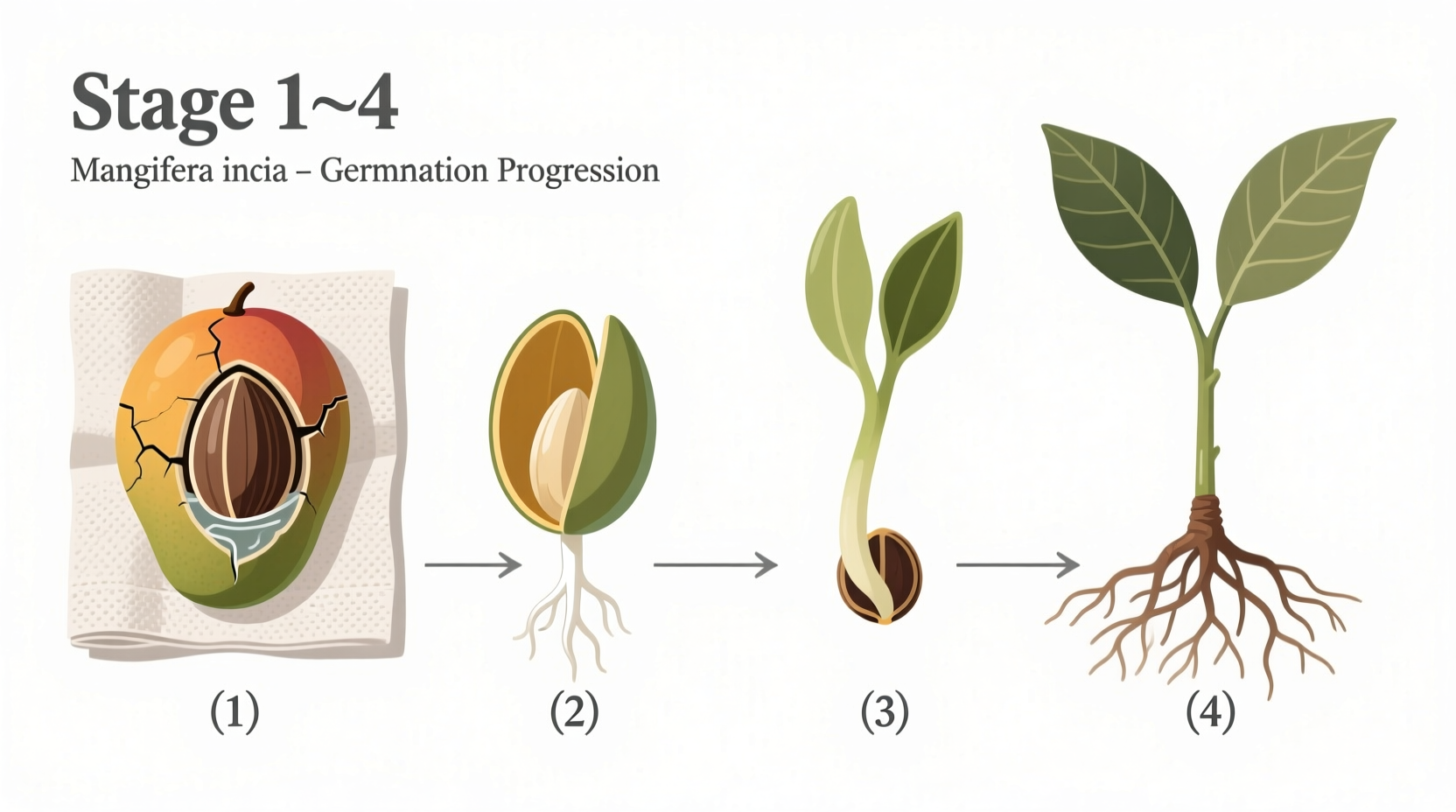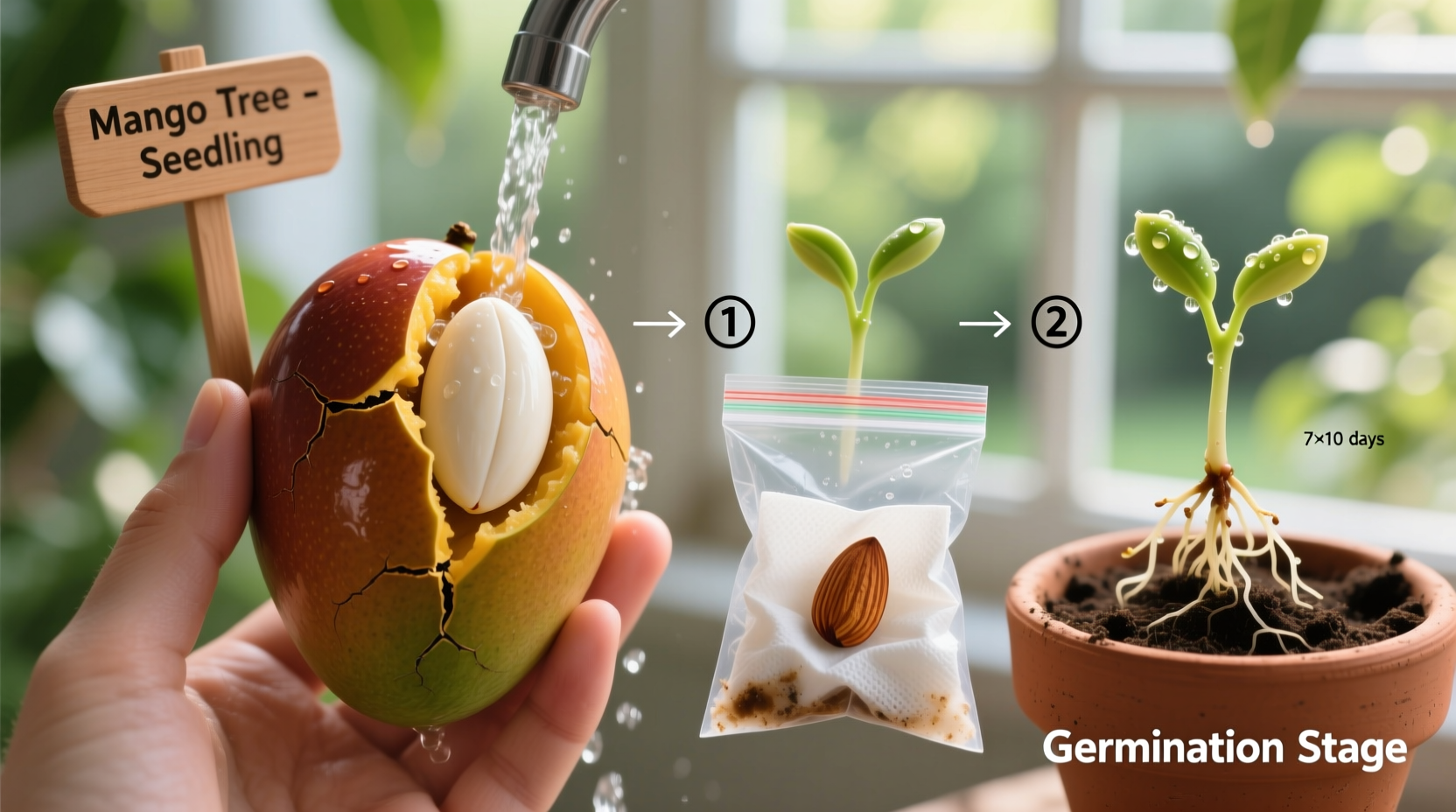Why Most Mango Seeds Fail Before They Sprout (And How to Avoid It)
Every year, thousands of home gardeners toss mango pits into soil expecting tropical bounty, only to face disappointment. The reality? Fresh seeds have an 80%+ viability rate, but improper handling drops success to under 20%. Before you crack open that delicious mango, understand these critical factors that determine whether your seed becomes a thriving tree or compost.
Your Seed Selection Determines 70% of Your Success
Not all mango seeds are created equal. Commercially shipped mangoes often come from trees treated with growth inhibitors, making their seeds less viable. For best results:
- Choose fully ripe, locally grown mangoes (not refrigerated)
- Use seeds from fruit you've eaten yourself (proven freshness)
- Avoid seeds from store-bought mangoes held in cold storage
- Plant within 24-48 hours of extraction for 85%+ germination rates
Three Proven Germination Methods Compared
| Method | Success Rate | Time to Sprout | Best For |
|---|---|---|---|
| Paper Towel Method | 75-85% | 8-21 days | Cold climates, beginners |
| Direct Planting | 60-70% | 14-30 days | Tropical zones, experienced growers |
| Water Germination | 50-65% | 10-25 days | Monitoring root development |
Step-by-Step: Paper Towel Method (Highest Success Rate)
This technique, recommended by University of Florida's Institute of Food and Agricultural Sciences, gives you complete control over moisture levels during critical germination stages:
- Extract carefully: Cut around the seed without damaging it, then gently pry open the husk
- Clean thoroughly: Remove all fruit residue (sugars attract mold)
- Prepare paper towels: Dampen (not soaking) with distilled water
- Wrap seed: Place seed flat side down on towel, fold over, place in plastic bag
- Monitor daily: Check moisture levels and watch for root emergence
- Pot at right time: Transplant when root is 1-2 inches long and shoot appears

Avoid These 3 Critical Potting Mistakes
Many gardeners lose seedlings right after sprouting due to improper potting:
- Wrong soil mix: Standard potting soil retains too much moisture. Use 50% perlite with 50% potting mix for proper drainage.
- Planting too deep: Plant with the top 1/3 of the seed exposed. Burying the sprout crown causes rot.
- Overwatering: Water only when top inch of soil feels dry. Seedlings need consistent moisture, not saturation.
Realistic Timeline: From Seed to Fruit
Understanding the growth stages prevents premature disappointment. Based on USDA agricultural extension data, here's what to expect:
- Weeks 1-3: Germination (root emergence)
- Months 1-3: First true leaves develop
- Year 1: Tree reaches 3-5 feet tall
- Years 2-3: Requires larger container or ground planting
- Years 5-8: Potential first flowering (seed-grown trees)
Important note: Seed-grown mango trees rarely produce fruit identical to the parent tree and often require grafting for reliable, quality fruit production. The University of California Cooperative Extension reports that only 25% of seed-grown mango trees produce desirable fruit without grafting.
Climate Considerations: Can Your Location Support Mango Growth?
Mango trees thrive in USDA zones 9-11, but container growing expands possibilities. Consider these climate boundaries:
- Frost sensitivity: Temperatures below 40°F stunt growth; below 30°F causes permanent damage
- Container solution: Grow in pots (minimum 15 gallons) for mobility in marginal climates
- Winter protection: Bring indoors when temperatures drop below 55°F
- Indoor limitations: Container trees rarely exceed 6-8 feet without specialized care
Troubleshooting Common Problems
Track these indicators to catch issues early:
- Yellow leaves: Usually overwatering (check drainage) or magnesium deficiency (apply Epsom salt solution)
- Leaf curl: Often pests like spider mites (treat with insecticidal soap)
- Stunted growth: Could indicate root binding (check for circling roots)
- No flowering: Seed-grown trees often take 5+ years; consider grafting for earlier fruit
When to Consider Grafting for Better Fruit
While growing from seed is rewarding, most home gardeners eventually discover that seed-grown mango trees produce inferior fruit. The Agricultural Research Service notes that commercial growers exclusively use grafting because:
- Seedling fruit quality is unpredictable (often fibrous, less sweet)
- Grafted trees produce fruit in 2-3 years vs. 5-8 for seedlings
- Specific cultivars can be replicated for consistent quality
- Dwarf varieties suitable for containers are only available through grafting
For best results, graft onto your seedling when it reaches pencil thickness (usually year 2-3) using scion wood from a known productive tree.











 浙公网安备
33010002000092号
浙公网安备
33010002000092号 浙B2-20120091-4
浙B2-20120091-4